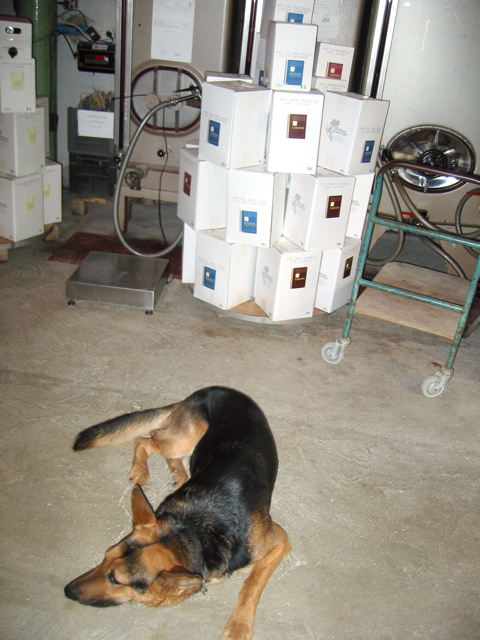When winery owner Jill Beaven hosts a dinner party, she fills two carafes — one for each end of the table — from a cardboard box of her own Cabernet Sauvignon that she keeps on the countertop. “It looks pretty, and pouring the Cabernet in advance lets it breathe a little bit and open up,” she says.
You know things have changed in the world of wine when you have to let boxed wine breathe.
Jill and her husband, Andrew, source their vines from a producer on South Australia’s Limestone Coast, an area comparable to California’s Central Valley. Last fall, the bicontinental couple, who split their time between Seattle and Adelaide, launched Tindindi Cellars in the Northwest, selling their 2001 Cab and 2004 Chardonnay all over Washington, Idaho, and Oregon, building on the hottest trend these days in the once-snobby wine world: premium boxed wines.
Aussies have actually been drinking decent wine out of a box for years — more than 50 percent of all wine sold Down Under is square. (Ironically, they call it “cask wine,” even though the boxes look like anything but casks.) The States, on the other hand, have traditionally snubbed anything but the cork.
Technological advances in the last five years or so, though, have made boxed wines much better than the cheapo jug-style schlock of the past. And Americans are drinking up these newer options — as illustrated by the more than 75 percent increase in sales of premium 3-liter boxed wines last year.
“People are starting to realize that the box is just a package,” Jill says. “It’s what’s on the inside that matters. And in Seattle especially, you get a very wine-savvy audience — Northwesterners aren’t afraid to try something new.”
Info: Tindindi Cellars’ wines ($20; www.tindindi.com) are available in the Northwest at QFC as well as some grocery stores and specialty wine shops.
Five reasons to buy boxed wine:
1. You get more bang for your buck. Premium wines come in 3-liter boxes (the equivalent of about four bottles) and sell anywhere from $15 to $25 a pop. Do the math — you’re getting a good deal on a good wine.
2. There’s no pressure to polish it off in one night. Unlike a bottle, which goes bad within a day or two of uncorking, boxed wine lasts about four to six weeks.
3. You can drink it now. Forget about the whole let-it-age thing — boxed wines are meant to be drunk within a year of being made.
4. It’s transportable. Because it won’t shatter, boxed wine is perfect for picnics, the beach, and tailgates. Take the oxygen-tight bag out of the box and bring it backcountry camping.
5. You have a reason to use that carafe. A pretty decanter filled with red wine looks so good on your table.
When shopping, look for:
3-liter boxes. These hold the good stuff. Avoid the old-school 5-liter cartons.
The vintage date and the varietal printed on the box. You want more information than simply “delicious red wine.” More recent vintages are generally better — boxed wine is not meant for the cellar.
The region. Check for familiar winemaking regions such as southeastern Australia or the Napa Valley.
Sunset staff picks
Reviews on Tindindi’s Cabernet Sauvignon were mixed, but the Chardonnay was deemed passable, especially by those who like a big, oaky style. Of the 25 boxed wines tasted by 10 of our staff, including wine editor Sara Schneider and our food editors, five rose to the top. Most of these are available at Beverages & More, except for Wine Cube, which is manufactured by Target and available only at Target stores.
Black Box Chardonnay 2005 (Monterey County, CA; $18). Creamy, buttery nose (with hints of Golden Delicious apple) meets zippy citrus flavors on the palate.
Delicato Merlot Bota Box 2004 (California; $18). Earthy nose with dried cherries. Smooth tannins and a long finish make it pleasant.
Stonehaven Chardonnay 2005 (Southeastern Australia; $18). Minerals and acid keep it from being flabby, despite its buttery nose.
Wine Cube Pinot Grigio 2004 (California; $16). Who knew you could get good wine at Target? Crisp citrus with melon and stone fruit. Great food wine.
Wine Cube Shiraz 2004 (South Australia; $16). Bacony, leathery, earthy, with dark plums and berries.






